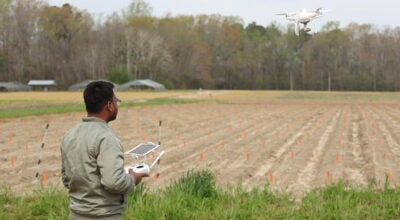Builder chosen for new 460
Published 10:17 pm Wednesday, October 17, 2012
The Commonwealth Transportation Board on Wednesday approved US 460 Mobility Partners, previously called Cintra, to design and build a toll road from Suffolk to Petersburg, which will cost motorists $3.69 for the 55 miles.
Mobility Partners, a consortium, was selected from three bidders, and transportation officials have said that the commonwealth of Virginia will fund $1.18 billion of the $1.369 billion project. The group was selected because it offered a financial plan requiring the least public subsidy, according to a press release from Gov. Bob McDonnell’s office.
“The commonwealth is partnering with the private sector to achieve the most cost-effective means of delivering this project,” Transportation Secretary Sean Connaughton stated in the release. “Long-term project benefits will far outweigh the investment to build the road.”
Financial close on the deal is expected in December; design, right-of-way acquisitions and permitting are scheduled to begin in 2013, with an estimated five years of construction starting in 2014.
Financing the rest of the project will be a tax-exempt bond sale by a nonprofit entity, raising between $100 and $216 million with the outcome of a $422 million low-interest loan request to determine the number of bonds ultimately issued.
With only seven interchanges, the limited-access, four-lane divided road will link Route 58 in Suffolk to the Interstate 295 interchange outside Petersburg.
Proponents say the road will improve safety by providing an alternative to the original road for heavy vehicles and provide extra capacity for hurricane evacuation.
It will also help harness the potential of the growing Port of Virginia to create job opportunities and be a strategic asset for the military, they say.
The new road “is critical to economic development in this growing region of Virginia,” McDonnell stated. “This project is expected to create 4,000 jobs during construction and more than 14,000 long-term jobs when the new road opens.”
December’s anticipated close would involve a 40-year agreement among the Virginia Department of Transportation, the funding corporation and the winning bidder.
US 460 Mobility Partners, which beat out 460 Partners Inc. and MultiModal Solutions LLC, is a consortium led by Ferrovial Agroman, a private transportation investor that says it employs about 70,000 people in more than 15 countries.
Besides whether it’s needed in the first place, the lack of access points and how the road will alter the cultural and physical landscape, the toll issue has arisen as a major argument by project detractors.
While it will cost lighter vehicles $3.69, trucks will pay $11.72 to travel the 55 miles, with tolling to begin in 2018 and potentially increase by 3.5 percent annually, including inflation, officials say.
Under plans, an independent traffic consultant will advise on toll adjustments if revenues do not exceed debt-service obligations, and tolls may be frozen if revenues outperform expectations by 10 percent to 20 percent.
The electronic tolling system will use E-ZPass and license plate detection and not involve traditional plazas with coin baskets.
With loan approval, which VDOT expects within two weeks, the commonwealth’s contribution would include up to $826 million from VDOT and $222 from the Virginia Port Authority.
The extent of the commonwealth’s authority in setting tolls and in other operational aspects has been a constant question over the project since early funding model details were revealed.
Officials told Wednesday’s meeting that Virginia’s rights and obligations would include ownership, oversight and auditing, making improvements, setting tolls initially and suspending them for emergencies, among other points, and citizens could benefit from excess revenue of $600 million.
VDOT Commissioner Greg Whirley stated that the new 460 “has been a top transportation priority for the state for more than 12 years.
“Since that time, VDOT has worked extensively with localities, the region and the public to complete environmental work, establish a corridor and then go through a lengthy evaluation process to select a private-sector partner and develop a financial plan to design and build the new highway.
“Project development involved open communications and numerous meetings with the public and local officials. And there will be more public outreach as we move ahead prior to signing the comprehensive agreement and bringing this project to financial close.”






